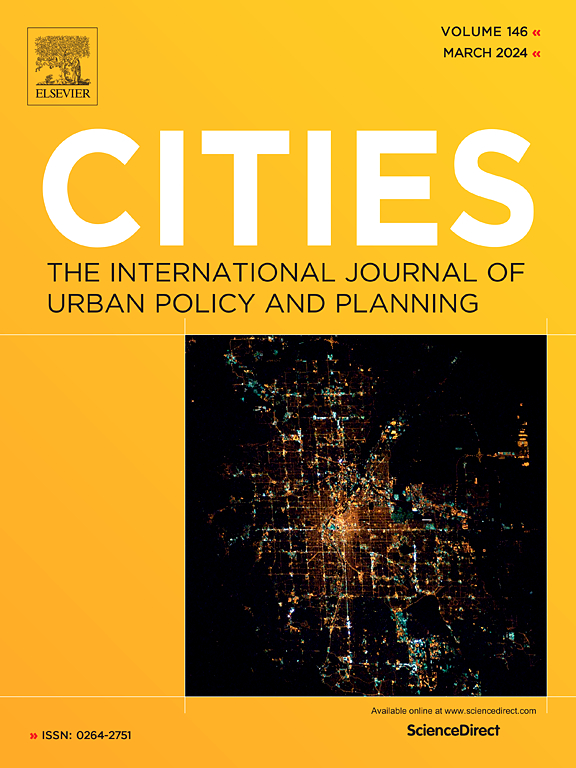空间和平
IF 6.6
1区 经济学
Q1 URBAN STUDIES
引用次数: 0
摘要
理解周围世界对我们行为和认知的影响是理解人们个人和集体积极和平体验的重要一步(Lindgaard,2017 年;Lindsay 等人,2022 年)。本文是将城市发展与设计的理论和实践与和平与冲突研究(PACS)的理论和实践相结合的首次尝试之一。因此,本文是为这两个领域的学者和实践者撰写的。本文的主题来自作者对另一个项目的研究,在该项目中,作者测试了和平极点指标之一--连通性的显著性,并对在地理研究区域内开展自身研究和社区发展的社会目的组织进行了访谈。本文第一部分首先概述了空间、地点演变的基本历史、理论和原则,以及它们在城市中的重要性。下一节将在城市规划和生态城市的框架内理解空间性及其对积极和平的影响。下一节利用城市发展、公民社会和 PACS 领域的工具,提供了可能的前进道路和下一步措施。这样做是为了以符合城市发展和 PACS 中伦理人文基础的方式帮助社区,包括场所营造、深度地图和空间和平极点的量化空间和平评估(Lindsay 等人,2022 年)等工具和实践。最后一节总结了这些概念和实践对和平与冲突研究以及从事城市和经济发展、冲突解决和政治分析的更广泛群体的影响。本文章由计算机程序翻译,如有差异,请以英文原文为准。
Spatial peace
Understanding the influence of the world around us on our behaviors and cognitions is a vital step in understanding people's individual and collective experiences with positive peace (Lindgaard, 2017; Lindsay et al., 2022). This paper begins as one of the first forays into weaving the theories and praxis in Urban Development and Design with the theories and praxis of Peace and Conflict Studies (PACS). As such, this paper is written for scholars and practitioners of both fields. The topics of this paper have been drawn from the research of the author on another project where he tested the saliency of one of the indicators of the peace poles, connectivity, and conducted interviews with social purpose organizations conducting their own research and community development in the geographical research area. The first section of this paper begins by outlining the foundational history, theory and principles of the evolution of space, place, and why they matter in cities. The next section grounds the understanding of spatiality and its implications on positive peace within the frameworks of urban planning and eco-urbanity. The following section provides possible pathways forward and next steps utilizing tools in urban development, civil society, and within the PACS fields. This is done to assist communities in ways aligned with the ethical humanistic foundations within urban development and PACS, including the tools and practices of placemaking, deep maps, and the spatial peace pole's quantified spatial peace assessment (Lindsay et al., 2022). The last section concludes with a summarization of these concepts and practices with their implications on Peace and Conflict Studies and the wider communities engaged in urban and economic development, as well as conflict resolution and political analysis.
求助全文
通过发布文献求助,成功后即可免费获取论文全文。
去求助
来源期刊

Cities
URBAN STUDIES-
CiteScore
11.20
自引率
9.00%
发文量
517
期刊介绍:
Cities offers a comprehensive range of articles on all aspects of urban policy. It provides an international and interdisciplinary platform for the exchange of ideas and information between urban planners and policy makers from national and local government, non-government organizations, academia and consultancy. The primary aims of the journal are to analyse and assess past and present urban development and management as a reflection of effective, ineffective and non-existent planning policies; and the promotion of the implementation of appropriate urban policies in both the developed and the developing world.
 求助内容:
求助内容: 应助结果提醒方式:
应助结果提醒方式:


